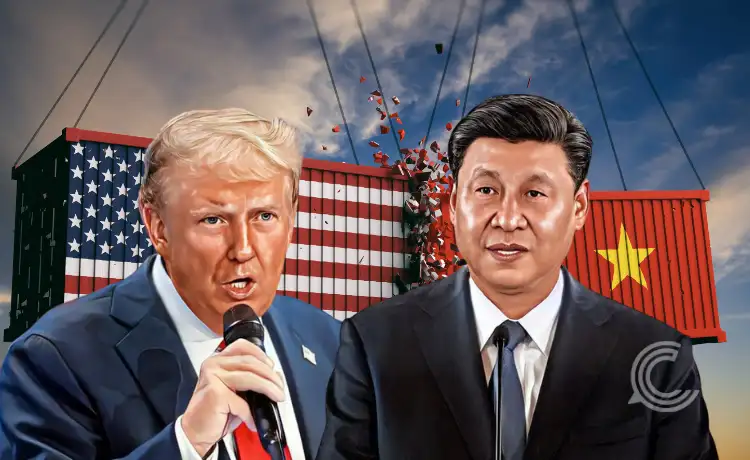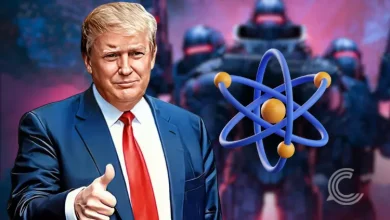US and China Agree on Trade Framework to Avert Escalating Tariffs

Key Highlights:
- A very substantial framework for a new US-China trade deal is reached by negotiators, eliminating the threat of a 100% US tariff escalation.
- China agreed to defer its new export controls on rare earth minerals, which are critical for high-tech manufacturing, for one year.
- The deal framework includes the resumption of substantial Chinese purchases of US soybeans and the finalisation of a deal on TikTok’s US operations.
The world’s two largest economies have taken a significant step back from the precipice of a full-blown trade war, with officials from the United States and China announcing a framework deal.
This preliminary agreement, forged over two days of intense talks, clears the path for a critical face-to-face meeting between the U.S. President Donald Trump and Chinese President Xi Jinping this week. The breakthrough offers a much-needed de-escalation in tensions that have roiled global financial markets for months, BBC reported.
Foundation for a New Trade Truce
The main objective of the agreement has been to prevent a major escalation of punitive measures. U.S. Treasury Secretary Scott Bessent confirmed that a “very substantial framework” had been achieved, which would effectively remove the threat of President Trump’s proposed 100% tariffs on Chinese imports set to take effect on November 1. In a reciprocal move, the framework anticipates that China will defer its recently announced export controls on rare earth minerals. These minerals are vital components for high-tech industries, from smartphones to defense systems.
The deal’s terms are not final, and both nations must now proceed with internal approval processes. However, mutual agreement to pause escalatory actions signals a renewed willingness to stabilize the contentious economic relationship.
Critical Concessions on Both Sides
For the United States, a primary win involves the immediate prospects for American agriculture. The framework includes a commitment from China to resume large-scale purchases of U.S. soybeans and other farm products, a sector hit hard by Beijing’s earlier retaliatory tariffs. For President Trump, this concession is a politically significant victory for U.S. farmers.
On the Chinese side, the commitment to delay its rare earth export restrictions is a major concession, given China’s near-monopoly on the mining and processing of these critical materials.
U.S. Trade Representative Jamieson Greer indicated that this provision provides a “path forward where we can have more access to rare earths from China,” while also working to balance the bilateral trade deficit, as reported by Fox News Sunday. Discussions on a final deal regarding the sale of the popular social media app, TikTok, were also part of the preliminary consensus.
Broader Impact on Global Markets
News of the consensus was met with a positive reaction in global markets, where investors had priced in a significant risk of further US-China trade negotiations collapse. The uncertainty surrounding trade tariffs and supply chain security, particularly for rare earths, had caused volatility across sectors, including technology and commodities.
The current framework, by delaying the imposition of new tariffs and rare-earth controls, offers a significant boost to market sentiment and provides a clearer planning horizon for multinational corporations. By addressing immediate tariff concerns and supply chain stability, the preliminary deal prioritizes practical economic implementation over complex, structural reforms, which are likely to be addressed in subsequent rounds of US-China trade negotiations.
The Path to a Final Deal
The framework now serves as the principal agenda for the upcoming meeting between President Trump and President Xi, where the final details of the comprehensive trade agreement will be negotiated.Both leaders will be tasked with transforming the diplomatic consensus into a binding and enforceable commercial deal.
Chinese trade negotiator Li Chenggang described the talks as “intense but constructive,” confirming that a “preliminary consensus” had been reached on a wide range of issues, according to China’s state news agency, Xinhua. The immediate goal is to formalize the extension of the existing trade truce, which is set to expire soon.
While the threat of a full-scale trade war has lessened, the long-term structural issues at the heart of the conflict, such as intellectual property protection and forced technology transfer, remain challenging and will require further high-stakes US-China trade negotiations to fully resolve. The successful completion of this framework, however, provides a crucial foundation for managing and stabilizing a deeply complex bilateral relationship.



